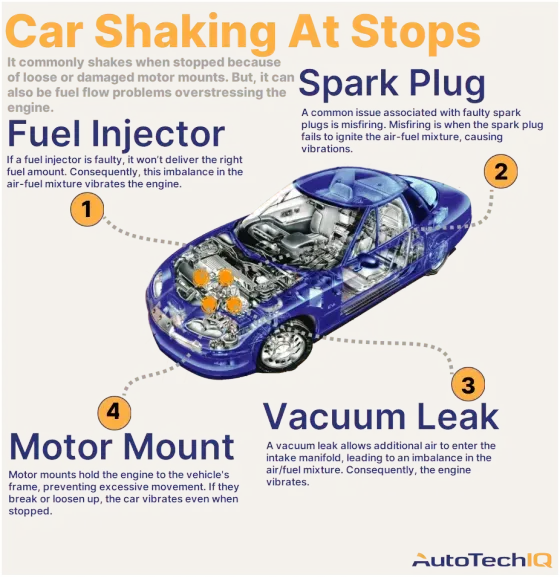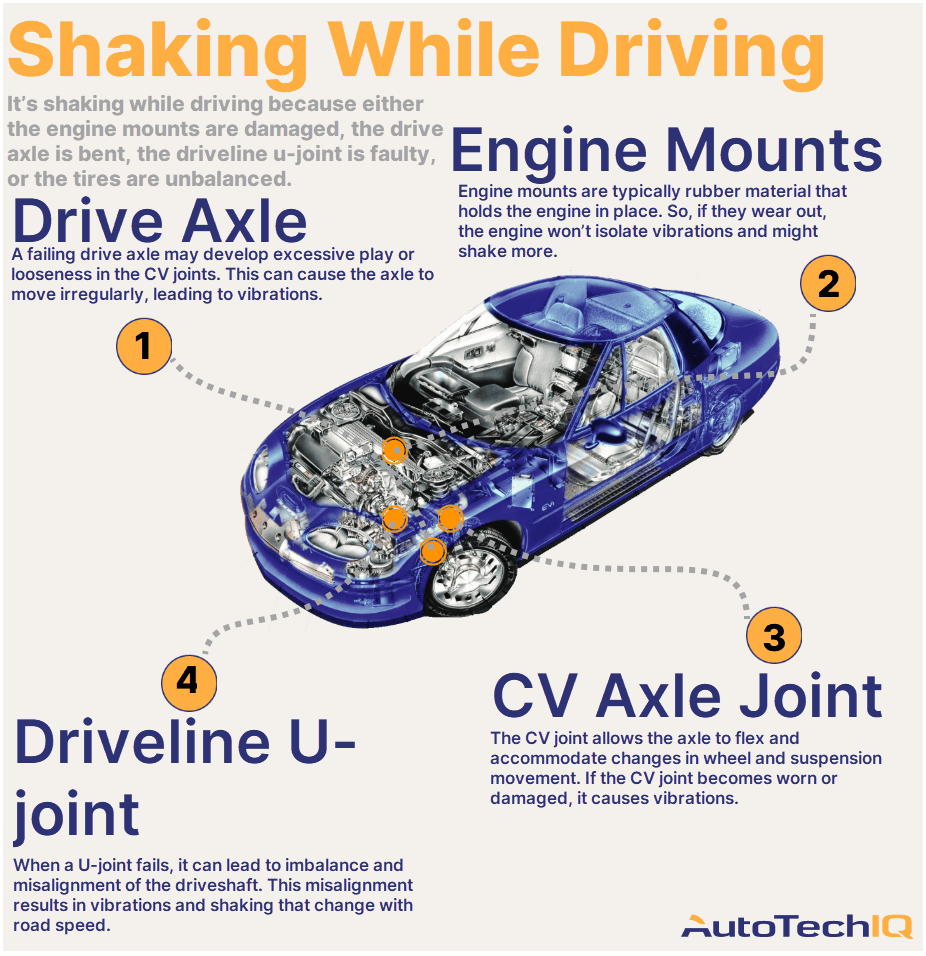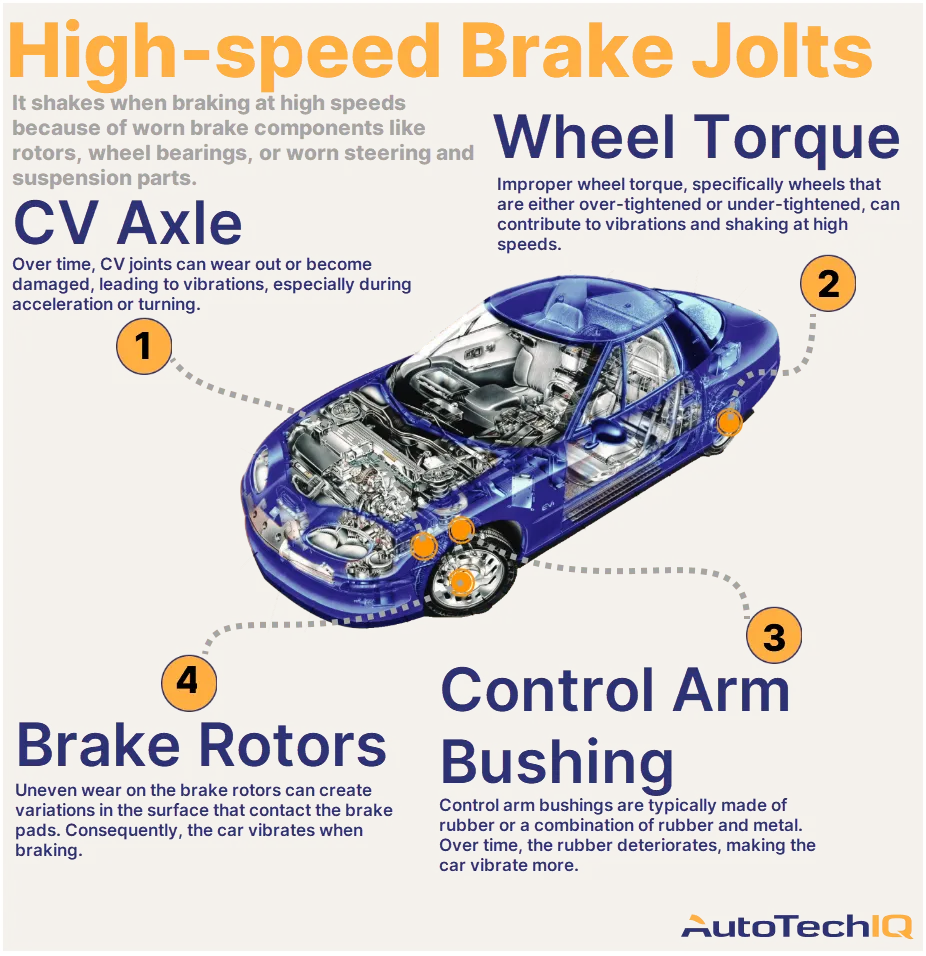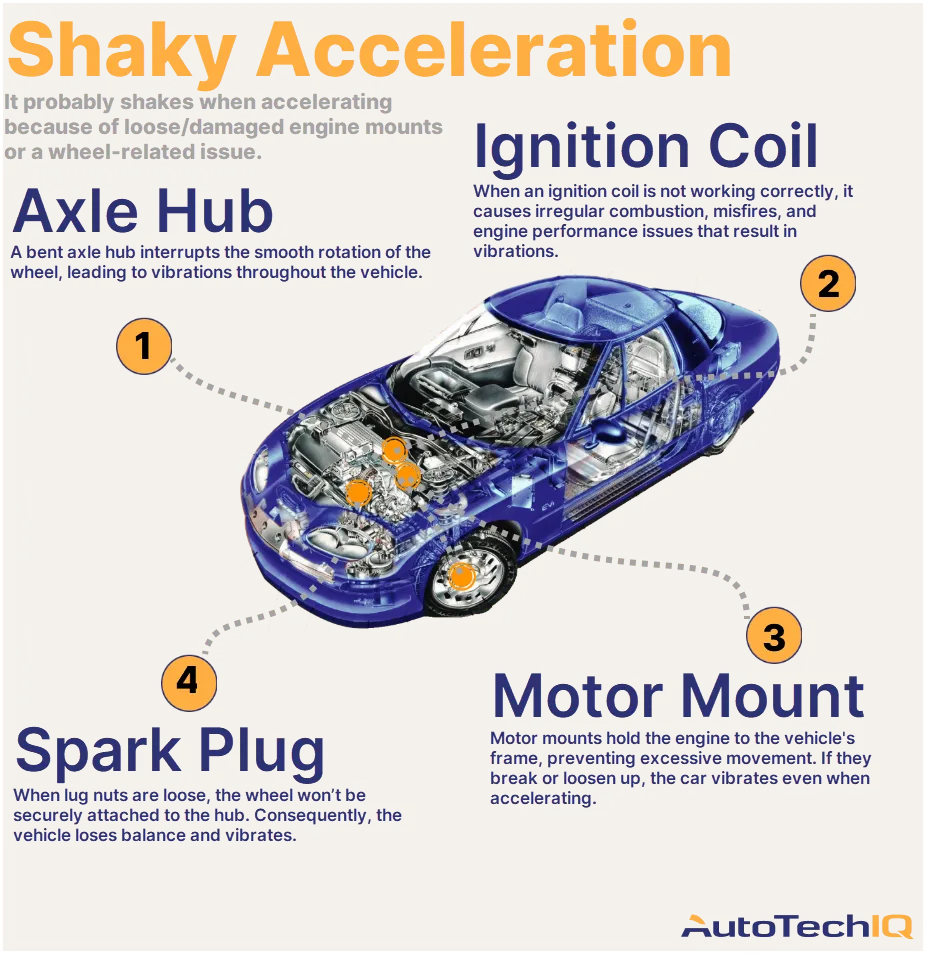
Is Your Car Shaking While Stopped?
It commonly shakes when stopped because of loose or damaged motor mounts. However, it can also be fuel flow problems that are overstressing the engine, such as carbon deposits, faulty fuel injectors, leaking intake valves, or damaged spark plugs.
To prevent further damage and expensive repairs, it's vital to act promptly and consider having a vehicle health inspection. By doing so, you can rest assured that your car will be safe to drive and won't pose any danger to yourself or others on the road.
Watch out: If you're experiencing your car trembling when it comes to a halt, taking action is essential. This occurrence may be a symptom of an underlying problem that warrants your attention. While it may appear minor, the shaking can affect your vehicle's handling and performance, threatening road safety.





